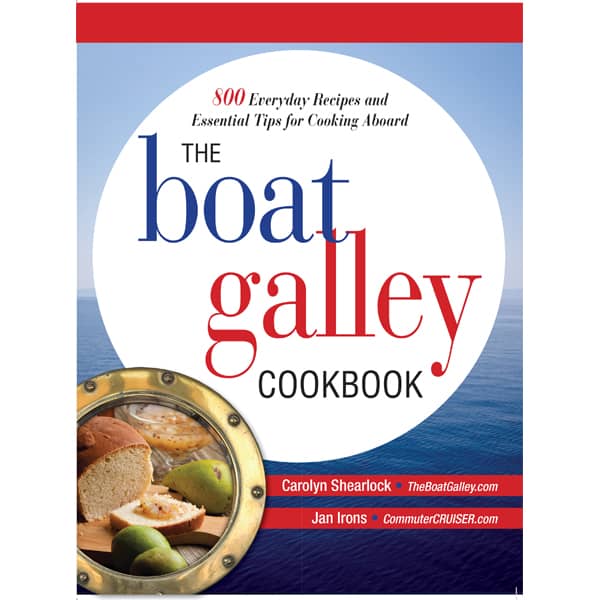
Okay, we’ll start with an admission that there’s no ideal way for storing coffee on a boat. But I love a cup of coffee in the morning, particularly when I can drink it in the cockpit and watch the world around me.
So I do the best I can, and just deal with the fact that the storage is never going to be “perfect” on a boat . . . but my surroundings when drinking it are perfect!
Methods for Storing Coffee
According to the National Coffee Association, coffee should be stored “away from excessive air, moisture, heat, and light.” They do not recommend refrigerating or freezing coffee, but instead storing it in a cool, dry, dark place in an airtight container. It’s often hard to do this on a boat!
Let’s take the recommendations one at a time:
Airtight Containers
Most coffee comes in some sort of an airtight container — or at least it’s airtight until you open it. Once opened, however, the plastic tops on coffee cans just aren’t truly airtight. Nor are bags where you fold down and clip the tops — although with these, you can use “banana seals” (Amazon) which do provide an airtight seal. Otherwise, investing in one or more Lock & Lock (Amazon) containers for your coffee stock is a good idea . . . and it’s an even better idea if the coffee you buy comes in plastic bags that just have a twist-tie on the top, as ours did in Mexico and Central America.
Moisture-Proof
Everyone, it seems, recommends not storing coffee in the refrigerator or freezer because of the moisture and condensate there. Basically, the idea is that every time you take the coffee out, the air in the package will pick up some moisture, which will then be absorbed into the coffee when it goes back into the refrigerator. However, most experts do say that if you have a large stock of coffee that you need to keep for a while, you can put it into the freezer until you’re ready to open it — but once you take it out of the freezer, don’t put it back in.
Cool Place
If you’re in a warm climate, don’t store your coffee against the hull and above the waterline. As the water is almost always cooler than the air, storing it against the hull but below the waterline is usually good — but watch out for condensate forming on the hull and getting into your containers (not a problem with airtight containers such as the Lock & Lock ones). Storing near the stove or in a locker near the ceiling is also a no-no as being too hot. Under the floorboards is much better.
Dark Place
Pretty much any locker is going to be dark . . . clear canisters on the counter or in gear hammocks aren’t good.
Buy What You Need & the Right Form
The National Coffee Association also recommends not buying more coffee than you’ll use in the next 1 to 2 weeks. Depending on where you’re cruising, that might just be impossible! I usually carried at least one month’s supply — and often two months’ worth — with us, depending on how long it would be before we’d reprovision (many small villages where we cruised only had tiny “stores” that only carried instant coffee).
Ground coffee degrades much more quickly than whole beans, as all the cut surfaces are exposed to air and moisture. Buying whole beans and grinding them yourself just when you’re ready to brew the coffee will produce a much better cup of coffee. Don’t grind it even a day ahead, particularly considering the other “challenges” in storing coffee on a boat.
Best Tips for Storing Coffee
So, putting this all together for storing coffee on a boat:
- If you’re not living full-time on your boat, you generally shouldn’t try to store coffee aboard from one trip to another. A closed up boat tends to get hot, and keeping an open package in the refrigerator isn’t a good idea. If you use the boat seasonally, definitely take any unused coffee home at the end of the season (most food should be taken off in the off-season).
- Buying coffee in 12-ounce to 1-pound packages can work pretty well. I put them, unopened, into a large Lock & Lock container in a cool (and inconvenient) location. One at a time I take them out and put the contents into a smaller Lock & Lock that I keep in a drawer just above the floorboards. Yes, storing it under the floorboards would be a little cooler — but also a much bigger pain to get to every morning.
- Getting whole beans and using either an electric grinder (see the one I have and like) or a manual grinder (see the one two readers use and like) will significantly improve your coffee.
Living on a boat, everything is a compromise. I’ll take slightly imperfect coffee storage in exchange for all the things I love about being aboard!
Related Posts

Carolyn Shearlock has lived aboard full-time for 17 years, splitting her time between a Tayana 37 monohull and a Gemini 105 catamaran. She’s cruised over 14,000 miles, from Pacific Mexico and Central America to Florida and the Bahamas, gaining firsthand experience with the joys and challenges of life on the water.
Through The Boat Galley, Carolyn has helped thousands of people explore, prepare for, and enjoy life afloat. She shares her expertise as an instructor at Cruisers University, in leading boating publications, and through her bestselling book, The Boat Galley Cookbook. She is passionate about helping others embark on their liveaboard journey—making life on the water simpler, safer, and more enjoyable.
Simplify meal prep on board with proven strategies for provisioning, maximizing fridge space, and cooking delicious meals aboard your boat.










Carolyn Shearlock says
Bruce —
You inspired me to do a little experiment this morning. My normal-sized pepper grinder will absolutely NOT grind coffee — the beans are too large to engage in the cutting blades.
A large-size grinder? I truly don’t know, but my guess is that if it’s designed for peppercorns, it’s not likely to work with the larger coffee beans.
Susan Wyatt says
Dearbhla,
We tried many french presses for our sailboat. We didn’t want glass so we tried several stainless steel ones. The one we found that we absolutely LOVE is our Bodum Arabica 8 cup french press. It is pricey ($109 on Amazon), but so worth it. What makes the difference is the stainless steel mesh filter. Many of the stainless steel presses use plastic filters and they just do not hold up as well. Spend the extra money, and enjoy your coffee! We also use the Lock and Lock containers for storage. Don’t waste your money on the clear plastic OXO containers… they don’t keep things fresh on a boat!
Happy Sailing!
LA and Susan Wyatt
s/v Genesis
The Boat Galley says
We ALWAYS have that!
Marsha Dickgieser says
I know! I was thinking… why would you NOT have strong coffee? Especially on a boat? Haha!
Carolyn Shearlock says
You’re lucky if there are stores all around where you cruise. That’s not the case in many great cruising locales.
Carolyn Shearlock says
Perfect!
Kyla Cormier says
you could maybe vacuum seal portions of it?
Carolyn Shearlock says
Yes, although if it’s already vacuum sealed from the company, that’s best.